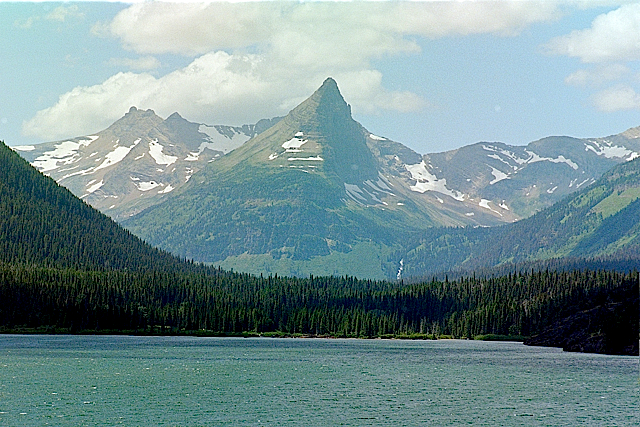NY Times Writes About “Last Chance Tourism”

Glacier NP (photo Bill Wolfe)
I guess the disappearance of glaciers due to climate change is now a real mainstream issue, because the NY Times travel section is on the story, keeping their elite global trekking tourists up to date on the latest events.
But maybe not.
With superb photography, in a story focusing on the spectacular beauty of Glacier National Park, the Times laments having to engage in what they call “last chance tourism” (see “Twilight of the Glaciers“.
We are truly moved by the exertions and crocodile tears of self described “urban day hiker” Times journalist Stephen P. Nash. It must have been a tough assignment no other Times writers wanted. I’m sure all the senior writers and outdoor photographers wanted to go to Afghanistan or Yemen.
We too – on two pilgrimages – have tasted the huckleberries at elevation and pondered disappearing glaciers of that glorious National Park.
We too wrote about those experiences and posted our photographs – for some great pics and analysis, see:
- Report: Glaciers Disappearing From Glacier National Park (April 9, 2010)
- Glacier National Park (December 22, 2009)
But, unlike the NY Times, we explicitly warned readers – without “balance”, equivocation and obfuscation – of the known cause of glacial retreat – which is man made global warming.
Downplaying that issue, the Times writer described the science of global warming and glacier melt as “preliminary” (what the fuck? preliminary? By a travel page writer?!).
Reinforcing wingnuty views, the Times was careful to couch the glacial retreat as part of “natural variation“. The Times story used the word “inexorable“, which supports an inference that it is unstoppable and there’s nothing we can do about it:
The day before, I had spoken with Daniel Fagre, who coordinates climate change and glacial geology studies here for the United States Geological Survey. He is a 20-year veteran of research at the park. The retreat of the glaciers began around 1850, he said, as part of a slow, natural climatic variation, but the disappearing act has accelerated during the last hundred years. Until recently, his research projected that, as global warming hit its stride, the park’s glaciers would all be gone by the year 2030. Now he thinks it may be as soon as 2020.
Outsize snows this past winter, which kept many park roads and trails closed well into July, could briefly forestall the meltdown, but the longer warming trend is inexorable, he said.
No reprieve? “No, I think we are continuing on that path” he said.
The science is preliminary, but it’s clear that this loss will be more than aesthetic for the park’s ecosystem, he said. Those glacial reservoirs provide a steady supply of cool meltwater through hot summers and dry spells, helping to sustain a constellation of plants and animals, some rare” – big-horned sheep, elk and mountain goats among them.
Worse, the Times showed deference to the religious views of global warming deniers.
In fact, the Times’ story lent greater prominence and more clarity to those views.
Specifically, the story preceded the few buried paragraphs about the “preliminary” science with a description of the global warming denial religious views of the locals (you know, “locals”, the people those worldy Times travel writers call “folks”):
As I rested I heard women’s voices come from up the trail, sounding like an exuberant traveling book group. They seemed delighted to find a sprawled, worn-out guy to greet in passing. “How do you like it? This is our backyard!” the leader announced, adding that they were from Kalispell, Mont., just southwest of the park. I responded in superlatives, and asked whether folks here talk much about what’s happening with the glaciers.
There was a pause and the temperature seemed to decline a degree or two. “God will take care of everything we need,” one said.
“I don’t think man has anything to do with that,” her friend put in.
(A bartender at one of the lodges, not-authorized-to-speak-publicly-on-the-matter, confided that not all locals share these views.)
This is the kind of bullshit equivocation by the media that enables – even empowers – the global warming deniers.
The NY Times Travel Page is written for an elite audience. If that class of readers must be spoonfed this bullshit, you know something is seriously wrong.
And not only at the NY Times (ironically, an institution itself experiencing a decline akin to “The Twilight of the Glaciers”).

Pingback: messi trikot argentinien
Pingback: camisas do brasil masculina
Pingback: le nouveau maillot equipe de france
Pingback: warum hat niederlande oranje trikots